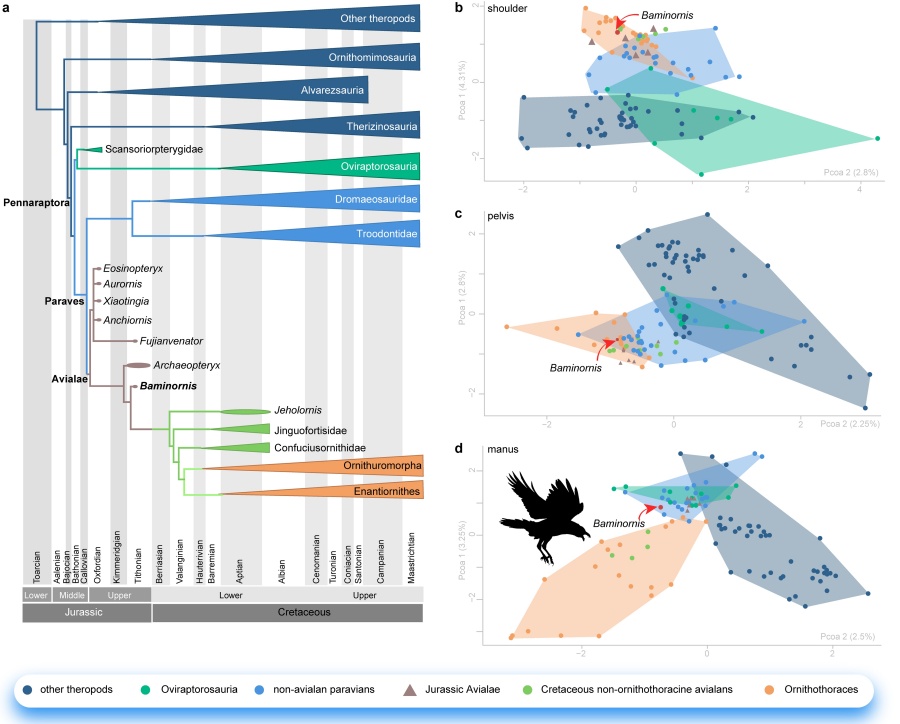China's Jurassic fossil discovery sheds light on bird origins


Although Archaeopteryx had feathered wings, it closely resembled non-avialan dinosaurs, notably due to its distinctive long, reptilian tail — a stark contrast to the short-tailed morphology of modern and Cretaceous birds. Recent studies have questioned the avialan status of Archaeopteryx, classifying it as a deinonychosaurian dinosaur, the sister group to birds. This raises the question of whether any unambiguous records of Jurassic birds exist.
In this study, the researchers named one of the two fossils Baminornis zhenghensis. This fossil displays a unique combination of features, including derived ornithothoracine bird-like shoulder and pelvic girdles, as well as a plesiomorphic hand structure resembling that of non-avialan dinosaurs. These characteristics highlight the role of mosaic evolution in early bird development. Notably, Baminornis zhenghensis has a short tail ending in a compound bone called the pygostyle, a feature also observed in living birds.
"Previously, the oldest record of short-tailed birds is from the Early Cretaceous. Baminornis zhenghensis is the sole Jurassic and the oldest short-tailed bird yet discovered, pushing back the appearance of this derived bird feature by nearly 20 million years," said Wang Min, the lead and corresponding author of the study.


















